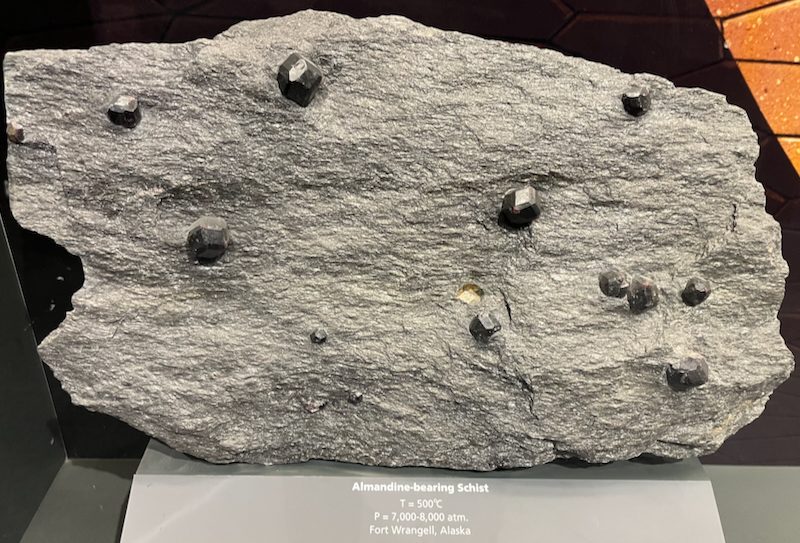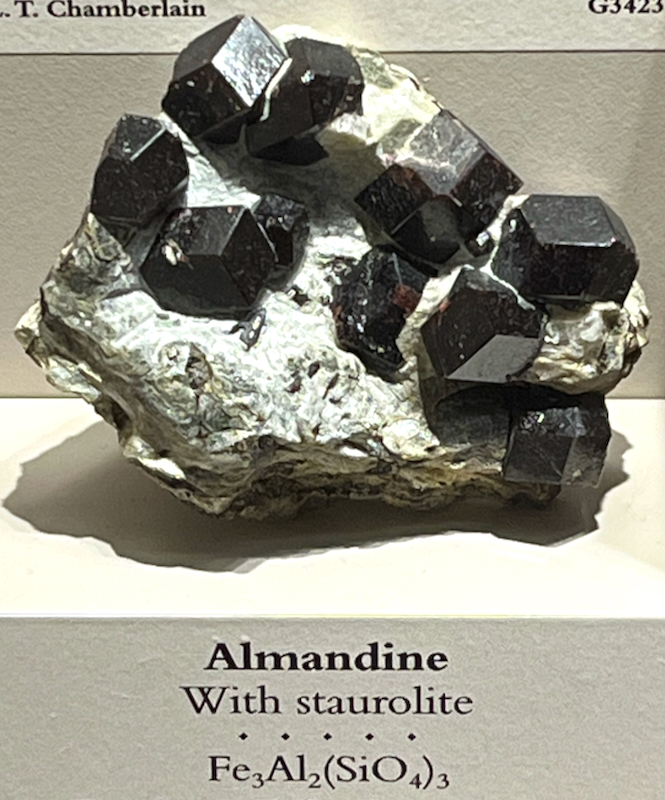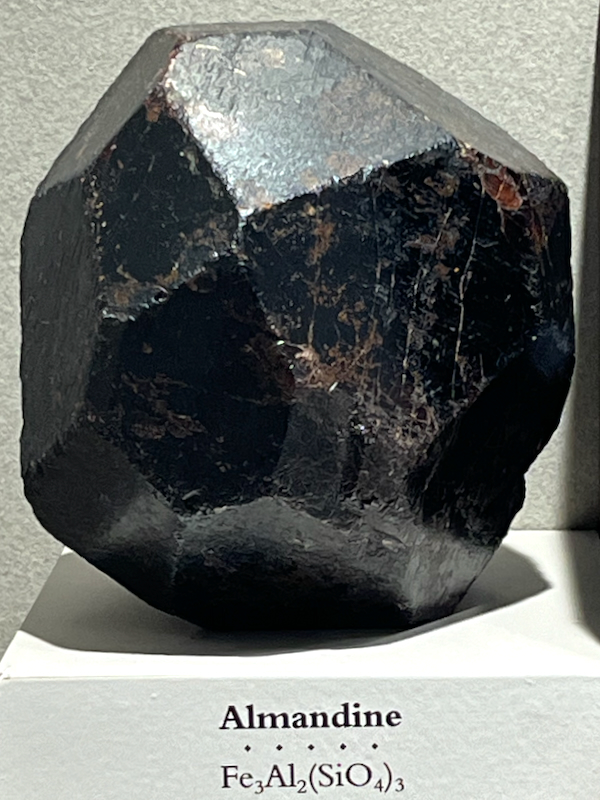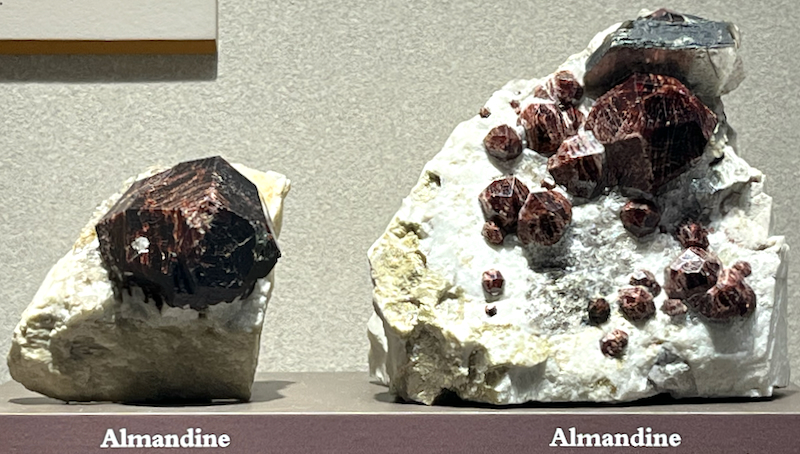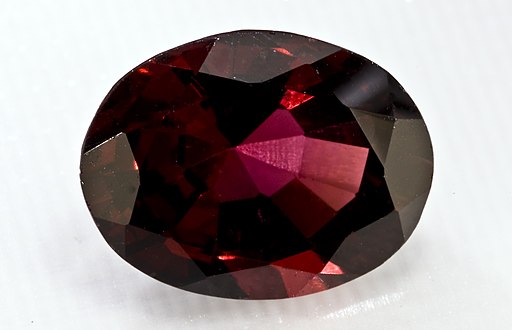Garnet
Garnet is one of those minerals that a lot of people have heard of, but all they know about it is that it’s red…and maybe that it’s the birthstone for January. Well, really, it’s not necessarily red. It’s probably red if it’s pyrope garnet, and often red if it’s almandine garnet or spessartine garnet, but it’s green if it’s demantoid, uvarovite, or possibly grossular garnet. And it’s black if it’s melanite garnet. Almandine gets its usually red color from iron, while other types of garnet get their colors from elements like manganese, magnesium, etc. Since the most common kind of garnet is almandine, it’s fine to think of garnet’s color as red, and when you’re out rockhounding, that’s what you’ll usually be looking for. If you like garnet, you’re in luck, because it’s one of the easiest gemstones to find. It’s not always perfect and clear, but you can find a lot of it in several types of rock, including schist, which is very common, and pegmatite, which is where you’ll often be if you’re looking for elbaite, schorl, mica, lepidolite, apatite, etc. Although nice clear garnet is an inexpensive but beautiful mineral that’s great for making jewelry, broken up garnet of lower quality should get some credit too, as it works very well as a coating for a special type of sandpaper.
| Formula | Group or Type | Shape | Hardness | Specific Gravity | Streak | Luster |
|---|---|---|---|---|---|---|
| (Fe2+,Mn2+,Mg)3Al2(SiO4)3 | Garnet | Isometric | 7–7.5 | 4.2 | White | Vitreous |

